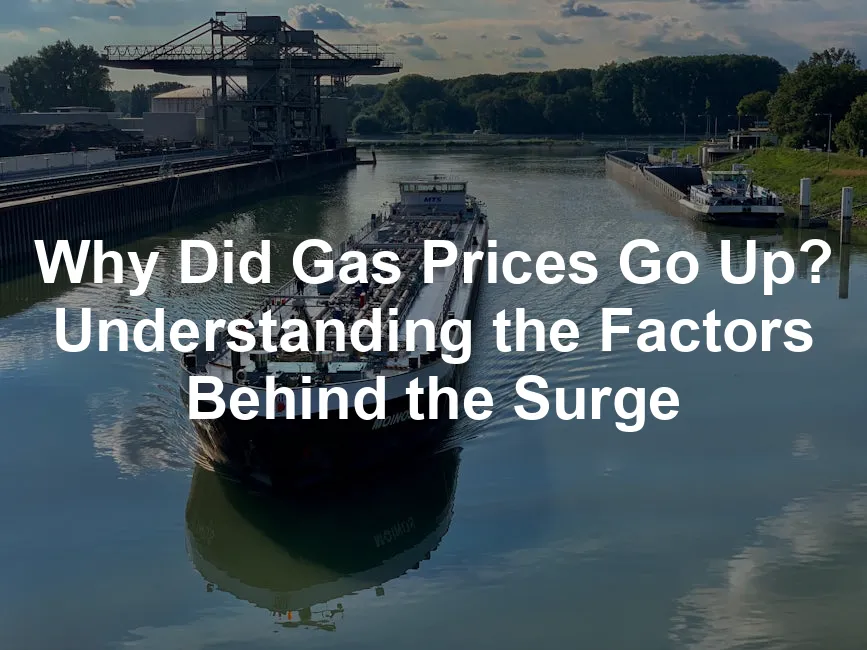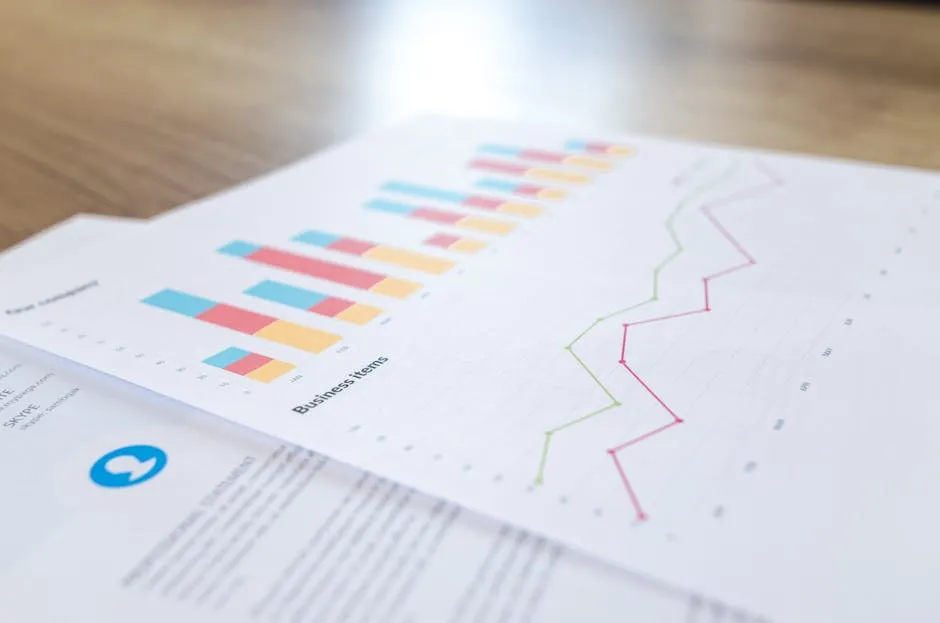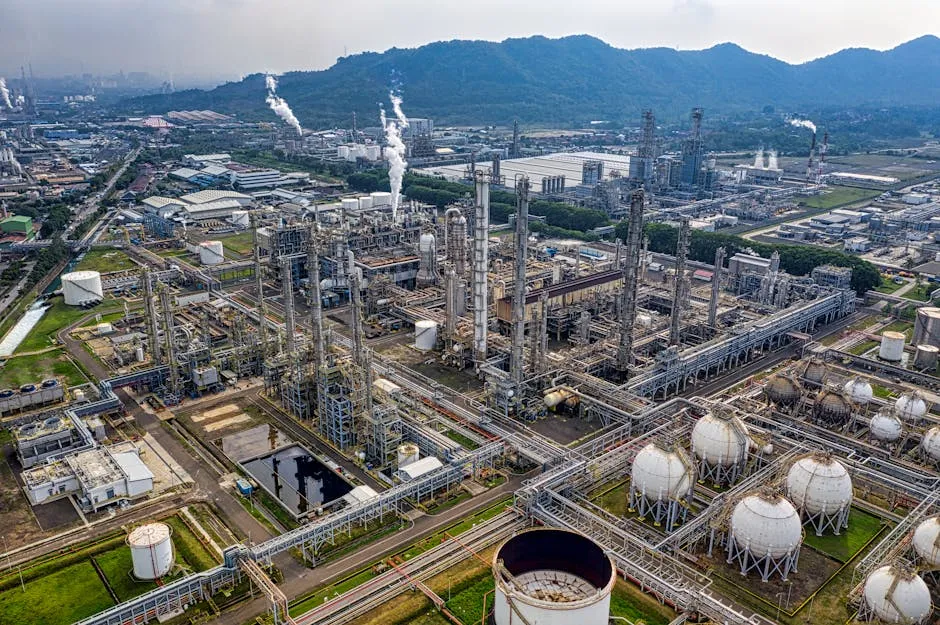
Why Did Gas Prices Go Up? Understanding the Factors Behind the Surge
Factors Influencing Gas Prices
Seasonal Demand Increases
As warmer months approach, gas prices often rise. Why does this happen? Increased travel during spring and summer drives demand for fuel. Families take road trips and vacations, leading to higher consumption.
Additionally, refineries switch to summer fuel blends. These blends are more expensive to produce, which adds to the overall cost at the pump. For example, the transition can add between 5 to 30 cents per gallon, depending on the year and market conditions.
Historically, gas prices tend to spike from March through June. This trend aligns with the start of the summer driving season. In previous years, prices have surged significantly during this period, with averages climbing by nearly 50 cents in just a few months. Keeping track of these seasonal patterns can help consumers plan their fuel purchases more strategically, potentially saving money by filling up before peak demand times.

Speaking of road trips, don’t forget to pack a Car Emergency Kit. This little lifesaver can help you tackle unexpected mishaps on the road, from flat tires to minor injuries. You wouldn’t want your adventure to turn into a roadside drama, would you?
Crude Oil Prices
Crude oil prices are a major factor in determining gas prices. The cost of crude oil accounts for more than half of the price you pay at the pump. When crude oil prices rise, gas prices typically follow suit.
Global market dynamics heavily influence crude oil pricing. For instance, OPEC’s decisions regarding oil production directly impact worldwide oil supply and prices. Geopolitical tensions, such as conflicts in oil-rich regions, can also lead to sharp increases in crude oil costs.
Recently, prices for a barrel of crude oil have fluctuated significantly due to these factors. For instance, during geopolitical unrest, prices spiked to over $120 a barrel. Currently, prices hover around $80.
Consumers can keep a watchful eye on these trends. Understanding oil price movements can assist in budgeting for fuel expenses. Following oil market news can help predict potential changes in gas prices, enabling better financial planning.

And while you’re at it, consider using a Gas Price Tracker app to monitor fluctuating prices in real-time. It can save you a few bucks here and there, which can add up faster than you can say “fill ‘er up!”
Supply Chain Disruptions
Supply chain disruptions can significantly impact gas prices. Recent events highlight how natural disasters and geopolitical tensions create challenges. For instance, hurricanes often lead to refinery outages, affecting gas production. When a refinery goes offline, it can severely limit gas availability. This shortage results in lower inventories and sharp price increases.
The aftermath of Hurricane Ida in 2021 is a prime example. It knocked out several refineries in the Gulf Coast, causing a spike in gas prices. Prices surged by up to 30 cents per gallon in some areas shortly after the storm. Similarly, maintenance issues at refineries can cause temporary shortages, pushing prices higher.
Historically, supply disruptions have led to noticeable price spikes. In 2008, for example, the combination of natural disasters and political unrest led to gas prices hitting record highs. Keeping an eye on supply chain news can help consumers anticipate potential price changes at the pump. Awareness of these factors can empower you to plan better and save money when filling up.

While planning for the unexpected, having a Portable Car Jump Starter can save you from the dreaded “my car won’t start” moment. It’s like carrying a little piece of magic in your trunk!
Inflation and Economic Factors
Inflation plays a crucial role in driving gas prices higher. Currently, inflation rates are above the Federal Reserve’s target. This means that the cost of goods and services, including fuel, continues to rise. When inflation increases, consumers often notice higher prices at the pump.
The relationship between inflation and gas prices is direct. As production costs rise, so do fuel prices. The current inflation rate hovers around 3.5%, which impacts consumer spending significantly. Higher fuel costs mean less disposable income for other purchases, affecting the overall economy.
Furthermore, long-term economic implications are concerning. Sustained inflation can lead to increased costs for transportation and goods, straining household budgets. Many families find it challenging to manage expenses as they allocate more of their income to fuel. In light of rising prices, consider adjusting your budgeting strategies to better cope with these economic changes.

On the topic of budgeting, consider investing in a Reusable Water Bottle. Staying hydrated is key to maintaining energy levels, especially during those long drives. Plus, it’s good for your wallet and the planet!
Taxes and Government Policies
Taxes on gasoline are another factor influencing gas prices. Both federal and state governments impose taxes on every gallon sold. Currently, the federal gas tax stands at 18.4 cents per gallon, while state taxes can vary significantly. For example, California has one of the highest state gas taxes, at nearly 70 cents per gallon.
Recent changes in tax policies can also affect prices. Some states have raised their gas taxes to fund infrastructure projects. These increases become part of the final price at the pump, impacting consumers directly.
Understanding the breakdown of these taxes helps consumers grasp the total cost of fuel. Advocating for transparent tax policies can encourage governments to consider the burden on families. Engaging in discussions about taxation can empower consumers to seek fairer fuel pricing.

And while you’re at it, why not grab a Travel Mug with Coffee Maker? It’s perfect for those early morning drives when you need a caffeine fix to tackle the day ahead!
Geopolitical Events
International conflicts can significantly impact gas prices. Recent geopolitical tensions have disrupted oil supply chains, leading to noticeable price increases at the pump. For instance, the ongoing Russia-Ukraine conflict has profoundly affected global oil markets. In the wake of Russia’s invasion, oil prices spiked dramatically, reaching over $120 per barrel, a significant jump from pre-conflict prices. This surge in crude oil prices trickles down, raising gas prices for consumers worldwide.
Historically, gas prices have fluctuated due to various global events. For example, during the Gulf War in the early 1990s, gas prices soared as instability in the region spooked markets. Similarly, prices spiked again during the Arab Spring in 2011, reflecting how international conflicts can create ripple effects in fuel costs.
Currently, geopolitical tensions are still a major concern. With average gas prices hovering around $3.15 per gallon, it’s clear that the global situation continues to shape fuel costs. Keeping an eye on world news can help you stay informed about factors that might cause future price increases at the pump.

While you’re keeping an eye on the world, don’t forget to pack a Portable Bluetooth Speaker for your road trips. Because what’s a journey without your favorite tunes blaring in the background?
Refining Capacity and Production Issues
Refinery operations play a vital role in determining gas prices. When refineries experience operational issues, it can lead to significant price fluctuations. For instance, recent maintenance at several key refineries has limited gasoline production, causing prices to rise sharply. The current refining capacity in the U.S. is about 18 million barrels per day, yet any disruption can quickly reduce the fuel supply.
In 2021, for example, Hurricane Ida caused extensive damage to Gulf Coast refineries, leading to a notable spike in gas prices. Prices surged by an average of 30 cents per gallon in the weeks following the storm. Such incidents highlight how crucial refining capacity is to the fuel supply chain.
Moreover, during seasonal transitions, refineries often switch to costlier summer gasoline blends. This change can add 5 to 30 cents per gallon to the price, especially as demand increases in warmer months. Understanding these refining dynamics can provide insight into why gas prices fluctuate so dramatically. Supporting local refineries can help stabilize supply and potentially keep prices more manageable for consumers.

To keep things organized, consider investing in a Car Seat Organizer. It’s perfect for stashing all those snacks, gadgets, and other essentials on your next road trip.
FAQs
Why are gas prices rising right now?
Gas prices are climbing mainly due to seasonal demand and geopolitical tensions. As spring approaches, more people travel, increasing fuel consumption. This seasonal shift typically raises prices. Additionally, the ongoing conflict in Ukraine has created instability in global oil markets. These issues collectively contribute to rising costs at the pump.
How do crude oil prices affect gas prices?
Crude oil prices have a direct impact on gas prices. When crude oil costs increase, gas prices usually follow. This is because crude oil makes up a significant portion of the price you pay at the pump. For example, recent spikes in crude oil prices have pushed gas prices higher, reflecting market dynamics and supply concerns.
What role do taxes play in gas prices?
Taxes play a crucial role in determining gas prices. Federal and state governments impose taxes on every gallon sold. The federal tax is currently 18.4 cents per gallon, while state taxes vary. States like California have much higher taxes, which can add more than 60 cents per gallon. These taxes contribute significantly to the overall cost consumers see at the pump.
Can supply chain issues lead to sudden price spikes?
Yes, supply chain issues can cause sudden price increases. Historical examples include hurricanes that disrupt refinery operations. For instance, Hurricane Ida in 2021 caused significant refinery outages, leading to gas price spikes. Such disruptions can quickly reduce gas availability and force prices up, reflecting the vulnerability of the supply chain.
What can consumers do to save on gas?
Consumers can adopt several strategies to save on gas. One effective way is to use apps to find the cheapest local gas prices. Joining loyalty programs at gas stations can also provide discounts. Additionally, combining errands into one trip reduces fuel consumption. Lastly, maintaining your vehicle can improve fuel efficiency, saving you money over time.
How do geopolitical events impact gas prices?
Geopolitical events can significantly influence gas prices. When conflicts arise in oil-producing regions, prices often spike. For instance, the ongoing Russia-Ukraine conflict has led to substantial fluctuations in oil costs. As tensions escalate, the uncertainty in oil supply chains increases.
What is the outlook for future gas prices?
Looking ahead, several factors will influence gas prices. Current economic indicators suggest prices may fluctuate but stay below previous highs. Analysts predict that prices could range between $3.50 and $3.75 per gallon during the summer months.
Please let us know what you think about our content by leaving a comment down below!
Thank you for reading till here 🙂
All images from Pexels




